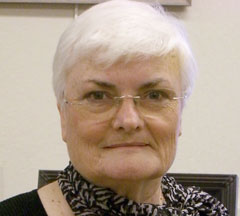Common Sense in Environmental Investigations
By Dr. Harriet Burge, EMLab P&K's Director of Aerobiology
This month the topic is common sense and its use in environmental investigations.
There are absolutely no "standard" ways to do environmental investigations. Each new
job is unique in one way or another, and while standard protocols can form a framework for most
investigations, the details always turn out to be unexpected and need to be addressed outside
the standards. These details are where common sense especially comes into play.
For example, what if you have found mold inside a wall, and have followed your usual protocol
of vacuuming and/or wiping down all the surfaces to remove all loose material. You have also
fixed the conditions that caused the water problem in the first place. So is it acceptable to
leave the small amount of mycelium that probably remains within the wood or other materials?
Common sense will tell you that such material will not continue to grow without water, and that
there are no more spores to be shed into the breathing zone, and that leaving this material in
place is okay. So then the homeowner tells you that he/she plans to sell the home and will have
to disclose the old mold problem. Will your "common sense" approach be enough to
satisfy potential buyers? It should, but probably will not. Common sense then tells you to
collect air samples to document that no mold is entering the occupied space. This should really
be enough provided you have done sufficient sampling to actually document that your conclusions
from the visual inspection were accurate.
In the same case, let's say that the homeowner is exquisitely sensitive to the fungi, which
causes severe asthma when she is exposed. Does your "common sense" opinion change?
It might. You may wish to think through carefully the potential future risks of mold growth and
whether or not the remaining fungal hyphae will exacerbate any future water problems. If the
answer is "yes" then you might want to remove all mold growth. Actually, I don't
believe residual mold hyphae encourage additional future growth. There are always enough spores
to recolonize even a completely sterile surface. Thus, I would still leave the residual material
and caution the homeowner that the home must remain completely dry throughout if future mold
problems are to be avoided.
Next case: you are asked to investigate a building where mold growth is obvious. In this case,
clearly, litigation is in the offing. So should you go with your common sense and not collect
any samples, but instead, investigate the building thoroughly to determine why the growth is
occurring and recommend a remediation plan? Or should you succumb to the attorneys and collect
hundreds of samples that will not contribute to the development of a good remediation plan. I
personally think that common sense is the only way to go here. You have been hired to figure
out why the building is moldy, and you have done that in a standard and efficient way. It would
be wise to explain thoroughly in your report specifically why you haven't collected any samples.
The attorneys, of course, will scream and holler that you didn't do an adequate job. You can
counter that sampling would be a waste of your clients money since the data collected would not
contribute to the conclusions already made from visual observations. Needless to say, common
sense could also lead to judicious sampling in this situation, for example, if you are concerned
about the possibility of hidden mold in places that do not appear wet.
This all sounds like pie in the sky, and I know many will say that I am not being practical.
However, we have to start somewhere. If we all stick to our guns, use common sense, and present
that common sense in easily read reports to our clients, maybe we can defuse some of the
extravagant requirements that the legal folks are imposing on us.
This article originally appeared in the June 2010 issue of Indoor Environment Connections.
Reprinted by permission.
 |
|
About Dr. Harriet Burge
Dr. Harriet Burge is EMlab P&K's Director of Aerobiology and Chair of EMLab P&K's
Scientific Advisory Board. Widely considered the leading expert in indoor air quality (IAQ),
Dr. Burge pioneered the field more than 30 years ago. She has served as a member of three
National Academy of Sciences committees for IAQ, including as Vice-Chair of the Committee
on the Health Effects of Indoor Allergens. View Dr. Burge's Curriculum Vitae.
Read "Ask Dr. Burge" articles
|